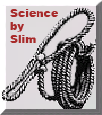 The
Scientific Method:
The
Scientific Method:
- Define
the Problem
- Research/Observation
- Hypothesis
- Experiment
- Observe/Collect
Data
- Analyze
& Draw Conclusions
Confirm
Results
- Report
The Scientific
Method Diagram
Hypothesis-
idea or explanation for something that is based on known facts but has not yet
been proved
Theory-
a formal statement of the rules on which a subject of study is based on of ideas
which are suggested to explain a fact or event or, more generally, an opinion or
explanation
Law-
a general rule that states what always happens when the same conditions exist
Accuracy-
correct, exact without any mistakes
Precision-
measured to a fine scale
Conclusion-
judgment based on the analysis of data from experiments or field studies
Variable-
any part of an experiment that can be changed
Field
Study-
observations collected in a natural setting instead of the lab
Length-
how long something is
Width-
how wide something is
Height-
how tall something is
Mass-
the measure of the amount of matter in an object
Matter-
anything that has mass and takes up space
Molecule-
small particles that make up matter
Atom-
smallest part of a substance that still retains the properties of that substance
P+-
protons
N0-
neutrons
e—electrons
Weight-
the force of gravity pulling on an object
Balance-
the mechanical device that is used to measure mass
Density-
the ratio of mass of an object to its volume D=m/v
 The
Scientific Method:
The
Scientific Method: